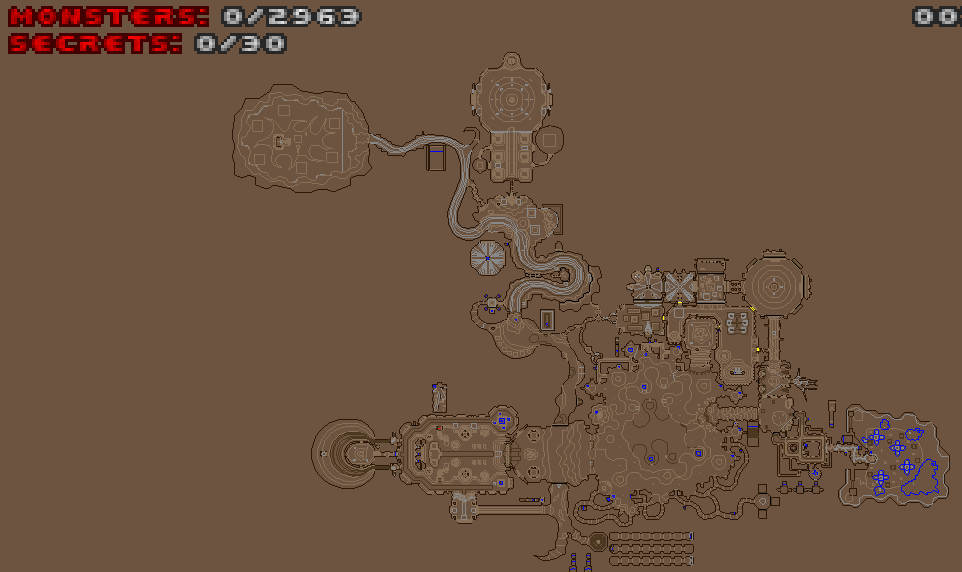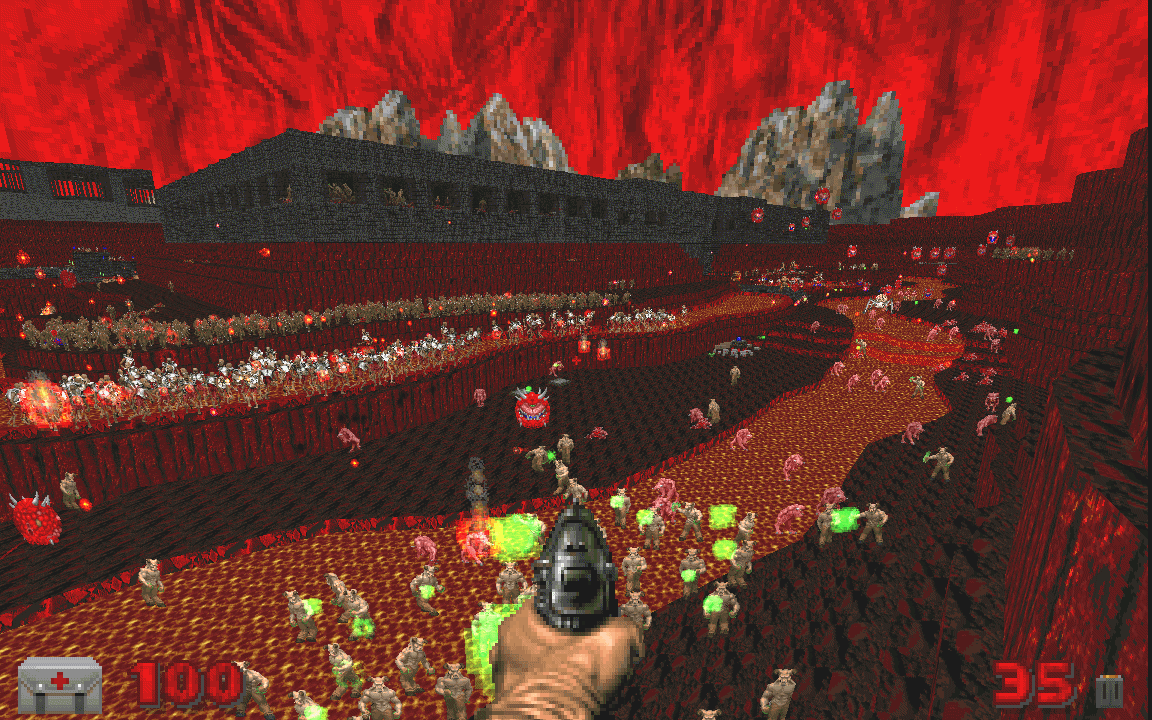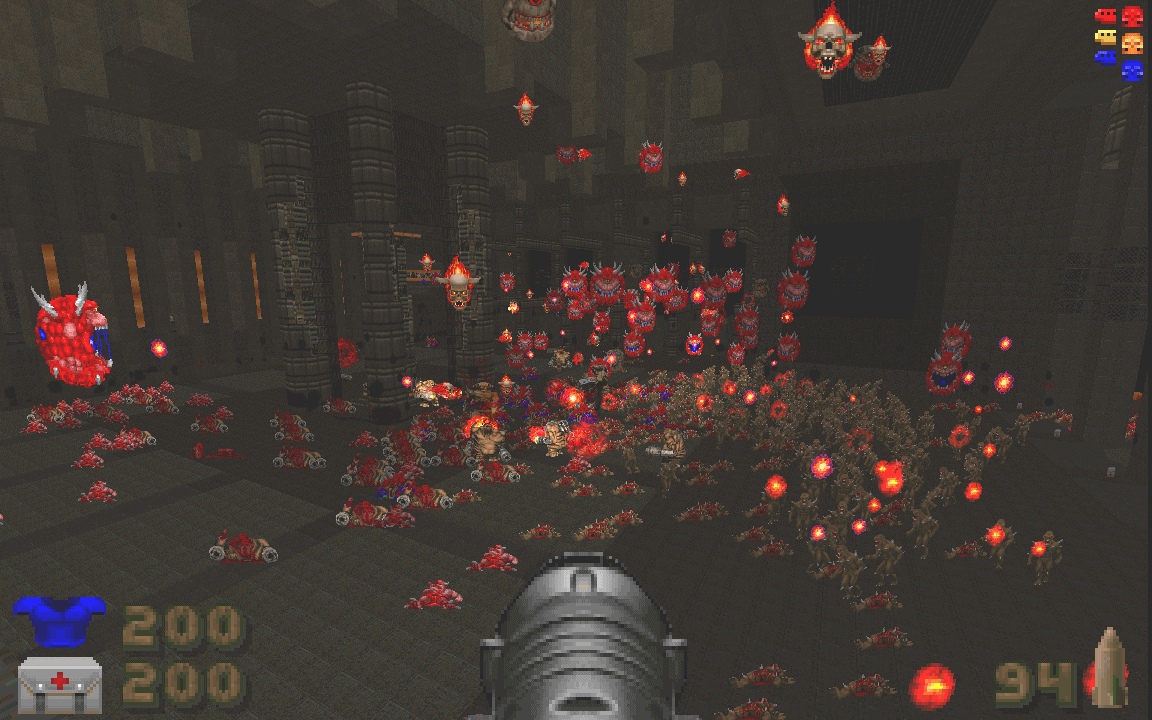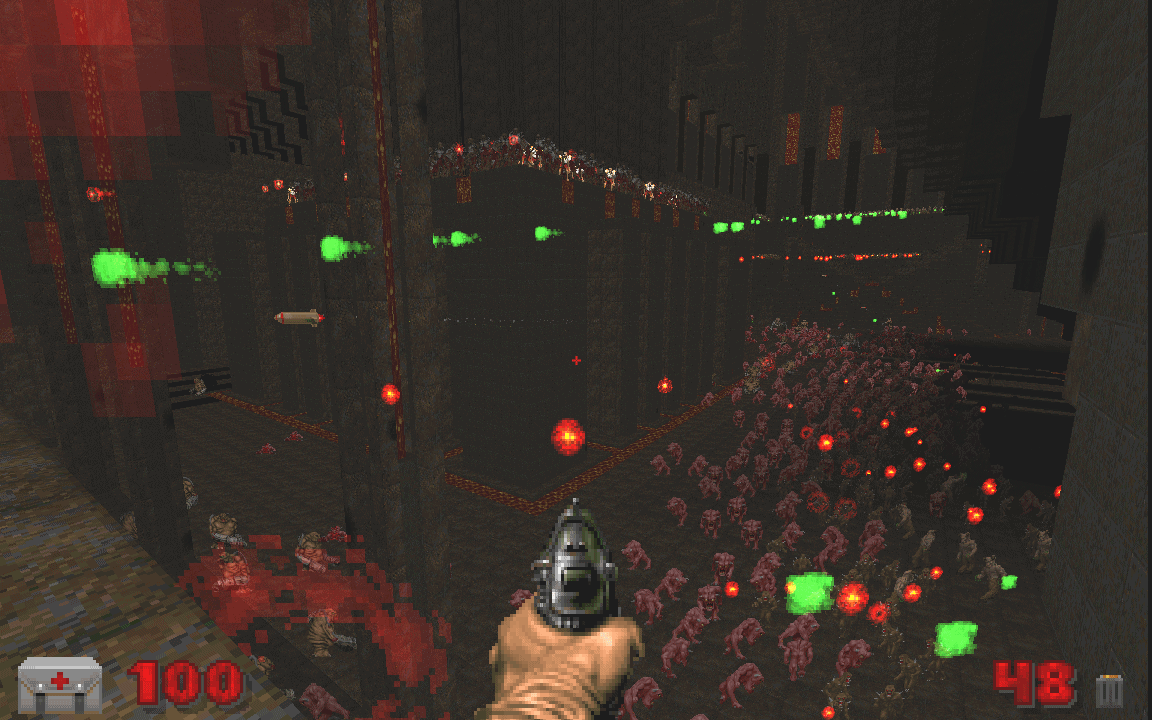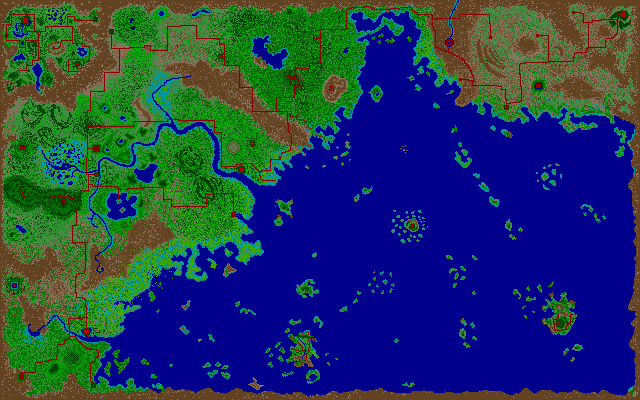Nathan Jerpe, the guy who made the astounding Legerdemain roguelike-like (because not randomly generated and not permdying) sent me ALL the maps that build the whole game, in native resolution.
I cannot believe my eyes. I’m not a young lad and I’ve seen a lot in gaming. Especially ambitious stuff. But this is certainly one of the most impressive attempts at pure worldbuilding I’ve ever seen. It’s magnificent and beautiful (and ASCII can be so pretty when you know how to use it).
For the time being I cannot share a thing, though. He asked me to not share those images because he still wants players to discover the game on their own, and exploration is a major factor of this game. I would respect that, of course.
But for the greatness you can spot in games there’s always the seed that creates the desire for “more”. That’s what fuels my idea for the crazy roguelike I’m experimenting with. So I have this very remote idea of “remixing” the stuff here and blend it with some other concepts. For sure it will be a source of endless inspiration.
One aspect I want to bring up is again the idea of the flat, bidimensional world. I explained how in Dwarf Fortress the evolution to a 3D world with z-levels fundamentally changed the concept and removed that abstraction, and what’s important to understand is that it’s an abstraction that has its uses and purpose, even if technology would let you have more.
Exactly the same happened with Doom and following games. Doom still today has an unique charm that will never be replaced, and, more importantly, it has nothing to do with “nostalgia”. Of course the gameplay in Doom is much better than Quake, but this is an aspect that is only indirectly tied to the fact Doom is 2D versus 3D in Quake. Indirectly because the limits of a 3D world didn’t allow Quake to be as expansive as Doom. The same happened with Doom 3: huge improvements on graphical fidelity didn’t allow for the same scale to be maintained. This transformed Quake in a game that was far inferior to Doom in pure gameplay and action, but so much better in environment exploration (and the reason why both Doom and Quake are extremely relevant today and do not overlap).
But this still leaves the 2D abstraction of Doom as an unique style with its own merits, and that cannot be improved or replaced. Because it’s an abstraction that works great. Doom levels are 2D. This means you can bring up a map and it’s a perfect representation of all there is to see. It’s a 3D world, projected in two dimensions, but at no loss. This lack of an actual dimension means you are UNCHAINED in what you can do with just two. It means removing the complexity of one dimension so you can add back that complexity to the rest. It means compressing reality so that you can explode outwardly what you can do. Faster, more easily:
You can reach enormous complexity that otherwise would be unwieldy. It’s a deliberate renunciation, more than building levels in Doom instead of a newer game just for the nostalgia. The point is: no modern game out there can go even close to what Doom does today. Doom 4 will be shamed by this.
Doom, Dwarf Fortress before Z-levels, and roguelikes, in modern times, all share the deliberate choice of removing one dimension (and often graphics, entirely) to stick with 2D. Again not for nostalgia, but because this choice EMPOWERS worldbuilding, pushing it to levels that are unmatched, even in AAA commercial products with huge costs (it’s also interesting to consider that GTA V achieved prettiness by sacrificing quite a bit of complexity compared to IV).
So let’s return to Legerdemain and similar. The game world is visually impressive in a way not unlike those Doom screenshots. Elegant complexity that pushes worldbuilding. I have some gaming myths that I carry with me. One is an RPG called “Fate: Gates of Dawn”. It’s one of the most ambitious and complex classic RPGs ever made. The world is HUGE and reportedly it takes more than 150 hours to complete. This is its game-world:
It’s an actual gameworld, not an abstracted map. Pixel accurate 1:1. This is a game built as a 1st person dungeon crawler, so you move cell by cell. Every single pixel there represents an actual location. If you moved North once, turned East and moved forward again then it means you would have moved two pixels on that map. Of course cities and dungeons are separate, but it still means this gameworld is built by 640×400 cells, for a total of 256.000 locations. Essentially half of it is water, but it’s HUGE nonetheless.
Another impressive attempt at worldbuilding is Wizardry 7, another reportedly huge game that pushed the idea of linking separate maps into an “open-world” that is meant to be explored non-linearly. The wilderness in that game is very big, especially if compared to other dungeon crawlers, but we’re dealing with an overall grid that is close to 200×200 (plus, apparently, another as big to comprise all dungeons and similar locations). So it’s an overall 40.000 cells, and you can see from the map that only a small minority are actually explorable.
The transition to 3D with Wizardry 8 obviously killed the game. But they tried to not downsize the map too much, although the game is still extremely ugly and they didn’t do very much with the 3D itself. The point I’m trying to make is the same: deliberately losing one dimension allows to escalate complexity. It’s a renounce that empowers the wordbuilder to go beyond.
Now Legerdemain. Considering just one set of six dungeons. Each is built on a grid of 189×105. So each is ideally 19.845 cells. And the total of all six is: 119.070. That’s ONE dungeon set. This collection has a total of 68 maps and all locations range from 15.000 to 30.000 cells. Even in this case when looking at dungeons only a fraction of the space is actually explorable, but you can still see how this world isn’t huge, it’s humongous. Unprecedented (and beautifully built, I’ve already said). It took me a number of hours to explore two of them, and they are not even complete since there are a few doors that are locked (and now I can see that one of those doors also opens access to another level bigger than the other two).
I can imagine that Legerdemain’s world might be fairly empty to explore. When you move through the wilderness you move between areas, through forests, hills, mountains, bridges and so on. All beautifully drawn in ASCII or tiles. But cell by cell there’s not much that is specific to see or find. This is an aspect I’m studying, as the cell in a 1st person dungeon crawler isn’t the same as a cell in a top-down roguelike. But why? The question to this answer is what my own game experiment should answer.
Legerdemain does at least some of my ideal goal. In the dungeons you sometime find rooms that contain a “?”. When you step over it, a text message pops-up and it gives you “flavor text”. For example a more detailed description of the room you’re entering. This creates the meaningful distinction. In both 1st person dungeon crawlers and roguelike top-down, you still have a “tileset”. Some basic building blocks with which you build the world. So you look at a map and you know that those rooms are all virtually alike. A maze. They might contain some objects and monsters, traps, doors, but in the end it’s space that contains a variable mix of objects. In 1st person dungeon crawlers the zoomed-in perspective and the high density of encounters lead to smaller worlds that are more packed with stuff. In top-down roguelikes instead you have a more expansive, but emptier environment that you cut through at a much faster speed. More forgettable? My goal is to find a formula and put back classic roleplay flavor into that top-down perspective. A slower pace where the room is unique, with complex textual descriptions that aren’t used simply to add flavor, but that offer various forms of manipulation. Through text. Doing for rooms the same that Torment did with dialogue: not just dialogue text, but description and depth of interaction to do far more than the engine made of sprites on a 2D fixed background would allow. It’s again the deliberate renunciation of a dimension, to allow for far more.
Because in the end I believe we do not have to simply live in our time. If we want we can try traveling through time to rediscover and rebuild what was great, to achieve even greater things. We can put aside nostalgia to retrieve what was actually good. Because, again, modernity doesn’t have to build 100% of what we like, making obsolete and even what isn’t.
